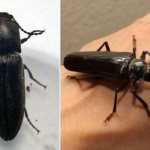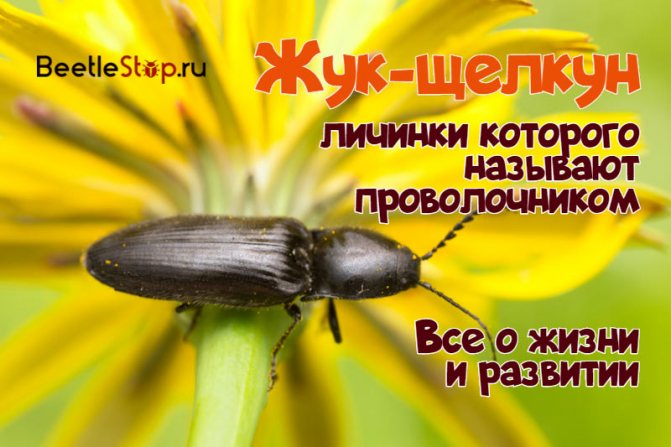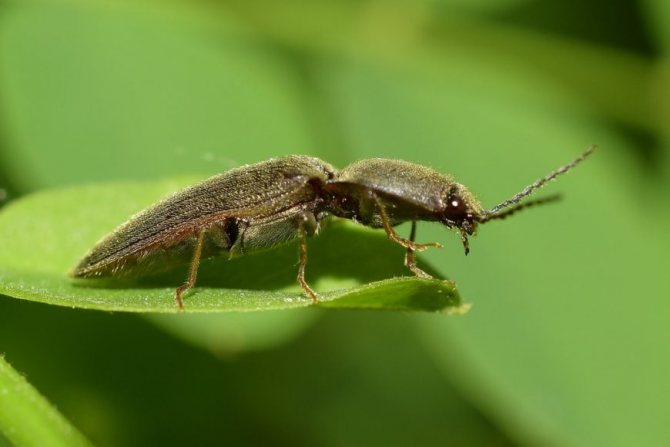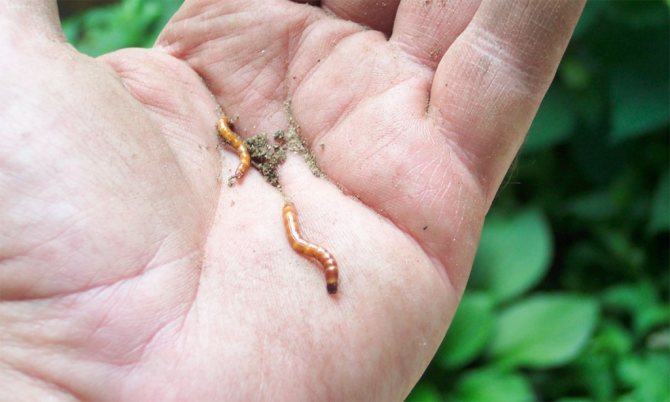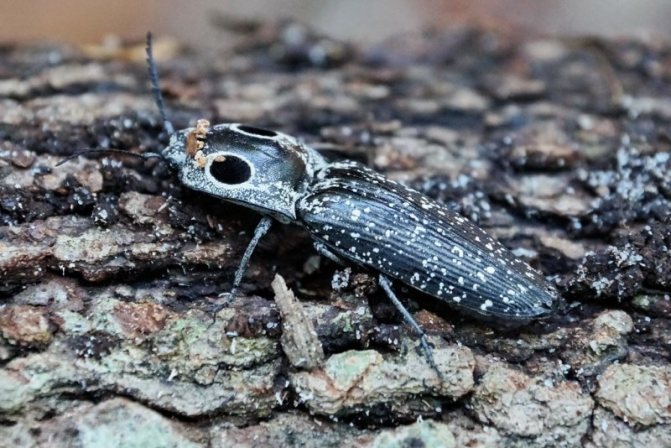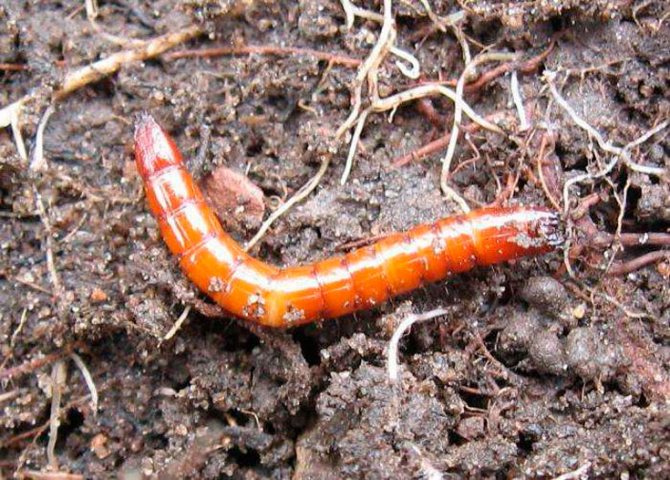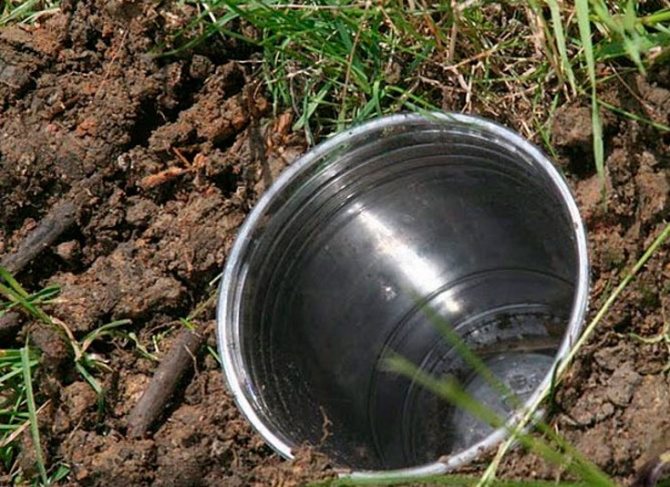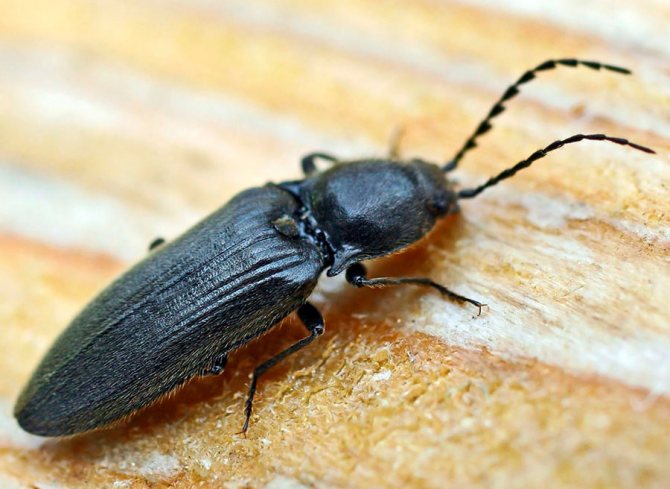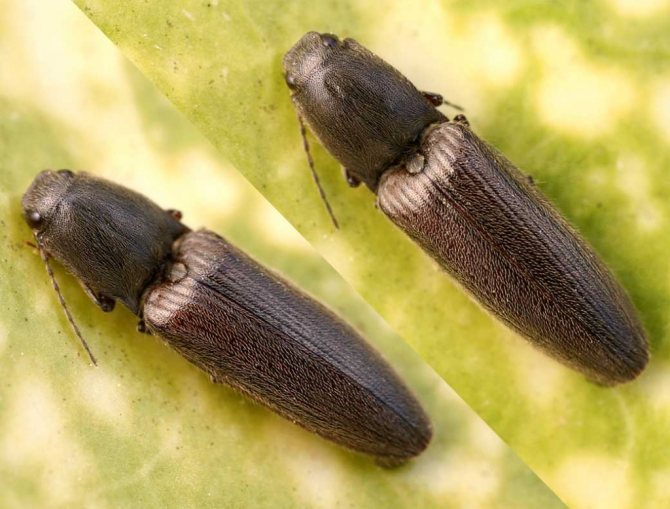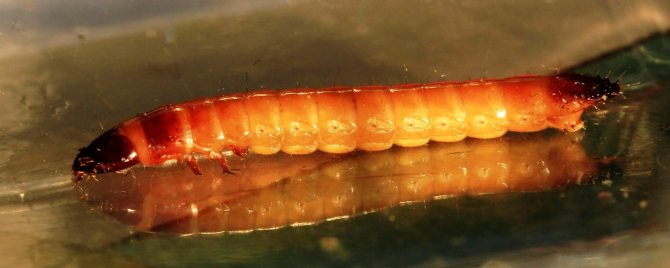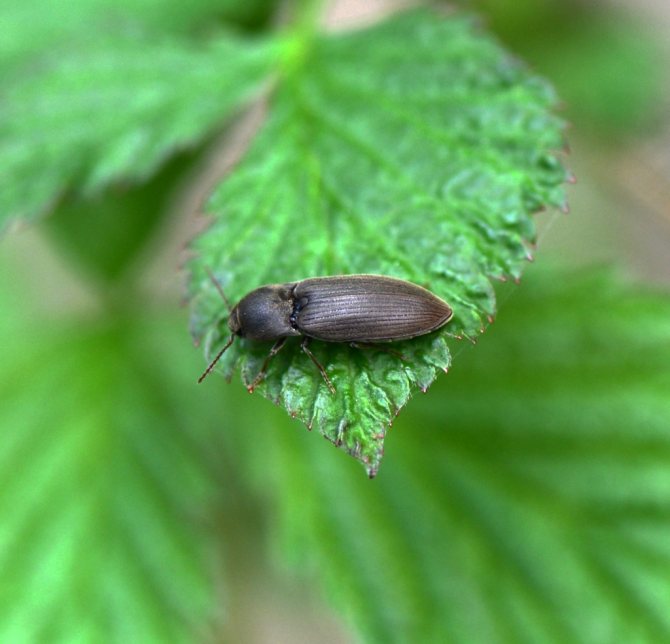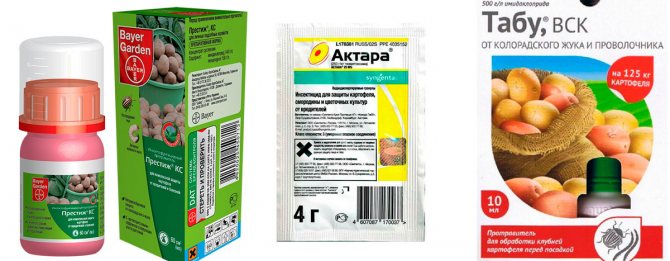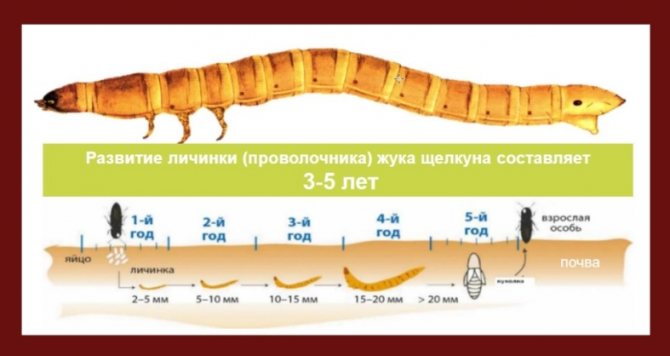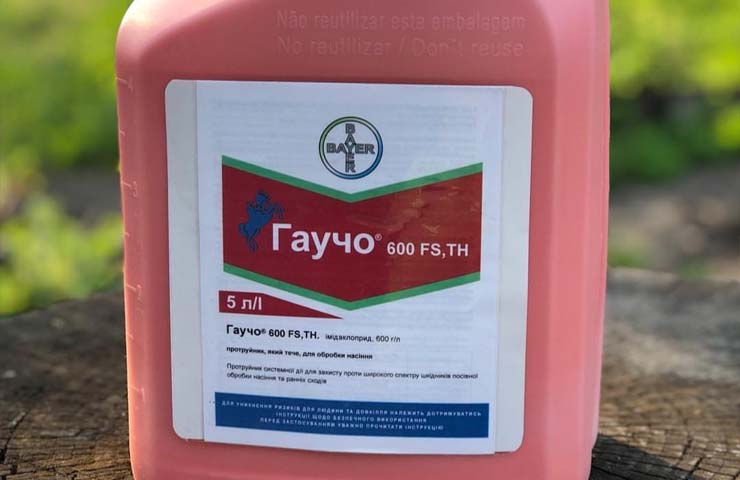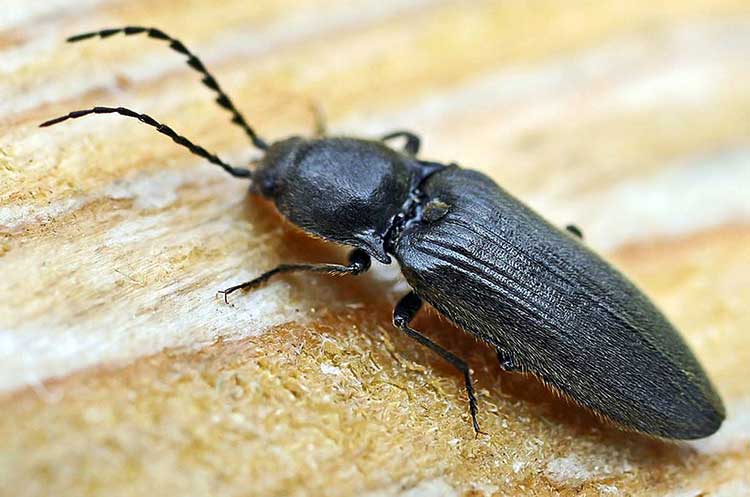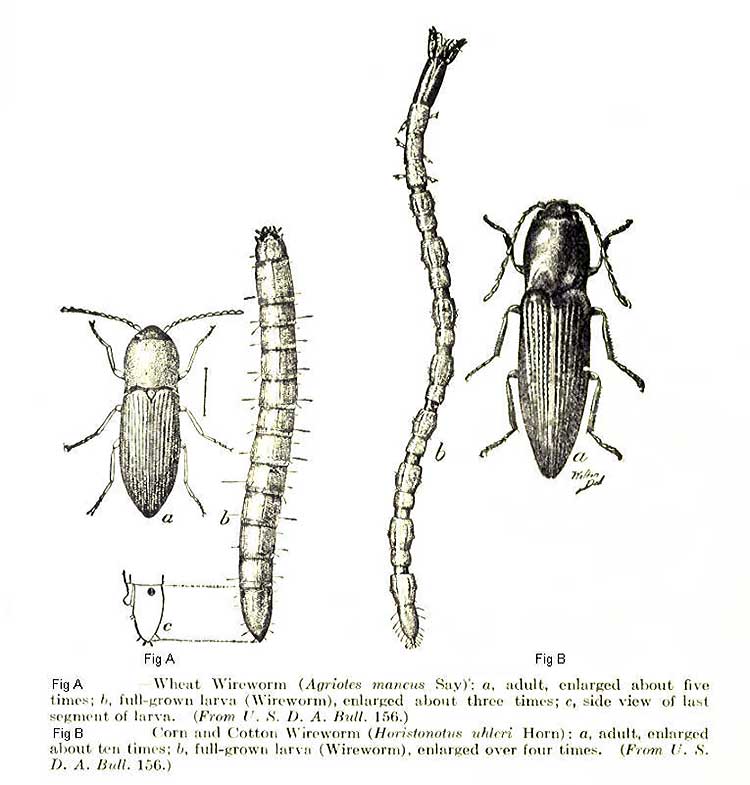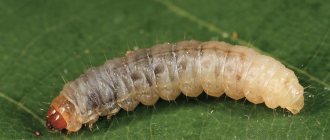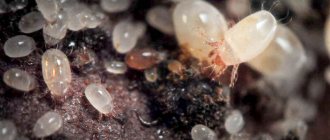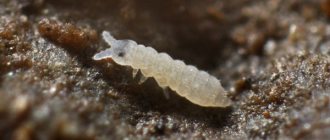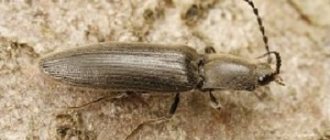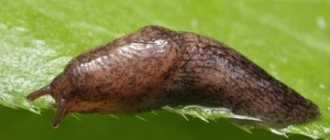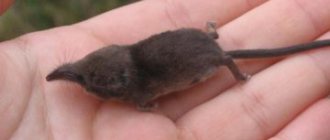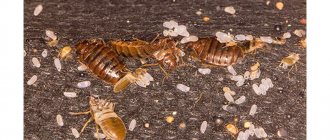- What a clicker beetle looks like
- Where the click beetle lives
- Reproduction of click beetles and maturation of larvae
- How to deal with clickers and wireworms
- Chemicals
- Agrotechnics against wireworms Using traps
- Unfolding the bait
The Nutcracker was nicknamed an acrobat for his ability to jump and roll over. The Click Beetle is a seemingly unsightly, small and harmless insect. More often found in gardens, fields and vegetable gardens. The threat is posed by offspring - voracious wireworm larvae. Staying in the larval stage for 4-5 years, they cause significant harm to vegetable and cereal crops.
What does a clicker beetle look like?
In nature, there are more than two and a half thousand species of clickers. They live everywhere: from the southern regions to the Arctic. The most common are dark, striped and steppe beetles. It is impossible to confuse this malicious pest with another insect.
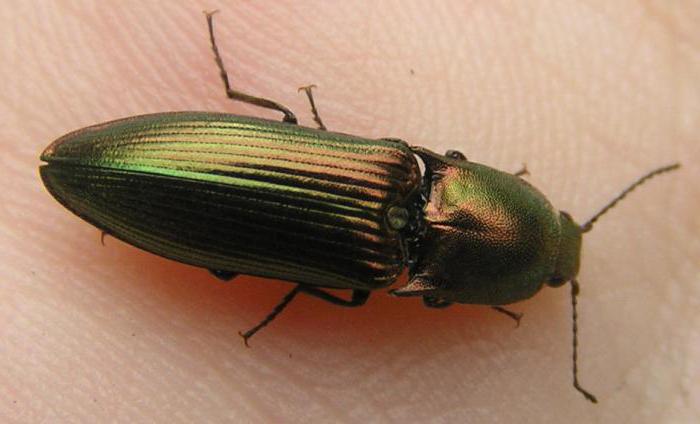
The fact is that the beetle jumps up and makes a characteristic click when it rolls over from its back to its legs. Therefore, they call him a clicker. This distinguishes it from other beetles. Its body is flattened, oblong, brown or black, with a characteristic metallic sheen and gray pubescence, the legs are segmented.
The tropical click beetle is more varied in color. It comes in red, orange, yellow, blue, green. Often in beetles, various patterns in the form of spots and lines can be found on the pronotum and elytra. The whiskers are clearly visible and are comb, serrated or serrated. And in females they are shorter. Adult insects grow up to thirty millimeters in length.
The click beetle, the photo of which you see in the review, lays white or cream-colored eggs in late spring - early summer, which absorb a lot of water during development, which increases their size by about one and a half times. The masonry is placed in small piles in the upper soil layer.
Adult clickers are nocturnal insects, during the day they sit in a shelter, which are leaves, boards, lumps of earth. Plants make up their nutritious diet. During a period of intense heat, they easily penetrate at night into a person's dwelling. The clicker beetle at home is a real disaster, since very often the humidity in the apartment is high. And this is very respected by clickers. Beetles hibernate at a depth of 40 cm. They feel comfortable in heavy soil, for example, clay.
How to get rid of?
How to get rid of (fight) the wireworm in the ground? Having found at least one specimen of Drotyanka in the garden, efforts must be made immediately to destroy it, because without her fellows she will definitely not climb.
Reference: One click beetle lays eggs in the ground, of which at least appear 150 larvae.
Drotyanka - the fight against it should be complex. Consider the main methods of struggle, which are effective both on a potato field and on unplanned land:
- plant in a suburban area legumesthat are considered unacceptable for drotianka: peas, beans, chickpeas, beans and soy;
- in the places of the greatest accumulation of this pest it is recommended to sow mustard, clover, alfalfa, spring rape or buckwheat;
- manually choose carefully from the ground roots of wheatgrass, sow thistle and cock's millet;
- do not plant land too thick... In the event that the area is small, and you need to plant a lot of things, often weed the aisles, which will loosen the soil and rid it of weeds;
- after weeding is complete, do not leave weeds, roots or their old tops;
- try to make the ground less acidic... To do this, during planting of vegetables, pour ash, crushed eggshells, lime and chalk into the grooves;
- plant between potatoes, onions and carrots marigold, which, during their flowering, emit an odor that is unpleasant for the larvae of the click beetle, which frightens them off;
- in the middle of autumn (in October), dig deep into the garden by hand. Important! The depth should not be less than 20 cm, which will allow you to pick up the wireworm from the ground and turn it over to the surface. Cold ground will help it freeze;
- late spring or early summer loosen the ground, which will allow you to raise the eggs of the click beetle to the surface of the soil. Under the influence of the bright and hot sun, they will die.
In addition, it should be said about two existing measures to combat drotyankathat have an equally positive effect on the condition of the soil:
- chemical - is aimed at introducing chemicals into the soil that can destroy the wireworm;
- agrotechnical - the meaning of this method is that the land is enriched with nitrogen fertilizers containing ammonium. You can also use regular ammonia water sprinkled on your garden.
Immediately after processing the soil in this way, the earth must be carefully dug up so that ammonia has not evaporated.
We will consider how to deal with a wireworm in the following paragraphs.
Our articles will tell you about pests and how to control them. Read about thrips, cicadas, aphids, slugs, locusts, moths, nematodes, mice, wood lice, moles.
Description of the wireworm
The click beetle, like all insects, lays the larvae. They are called wireworms because of their structural features. Their body is elongated, oblong, the length reaches four and a half centimeters. The integument is dense, segmented, yellow, shiny, very hard to the touch.
The larvae develop within 4 years, causing irreparable harm to plants. In the very first year of life, they are small light yellow worms. Crawling in the ground, they feed on the underground parts of plants. Small wireworms with a delicate cover are very vulnerable. They often become prey for predatory insects. Ground beetles love to feast on them.
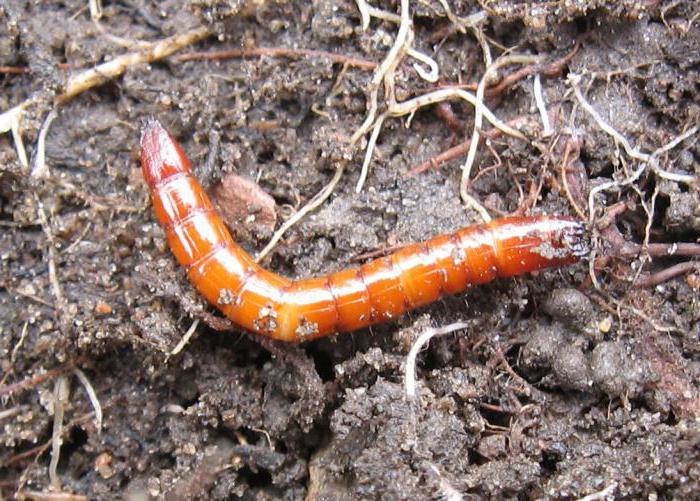

The click beetle becomes most active in the second and third years of its development. First, its size increases, the color changes to yellow or brown with a bright shine. The body becomes hard and resembles a wire. This is facilitated by the chitinous cover. The larvae themselves at this stage of development are a favorite food for insectivorous birds: rooks, starlings. Chickens eat them with pleasure. The habitat of the larvae is the topsoil. But during drought or frost, the pest hides deep in the ground, about 60 cm.
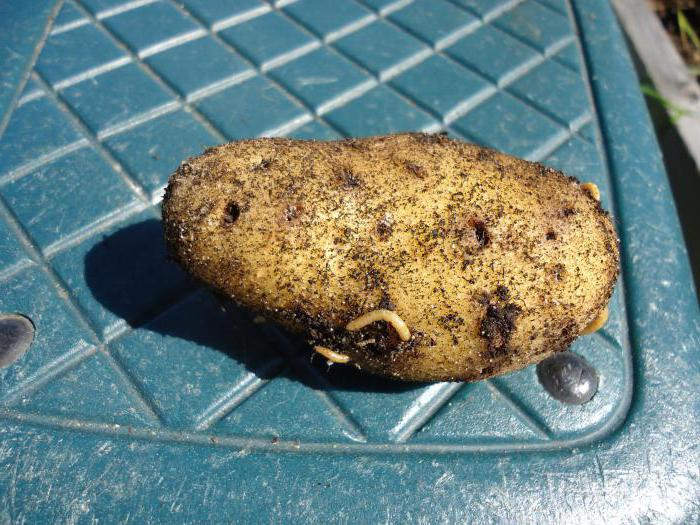

The clicker beetle (wireworm) completely destroys crops. It brings especially great harm to seeds sown in unheated soil. It bites into roots, tubers, and does not hesitate to root collars. The favorite treat of the pest is potato tubers. He makes moves in them, which significantly reduces the quality of the crop. Such a vegetable is stored poorly, it begins to rot. It is characteristic that it is possible to notice this only during the harvest. In the fourth year - from the beginning of June to the end of August - pupae are formed, which turn into beetles after three weeks.
Wireworm - types, structure and developmental features
Knowing the peculiarities of its development will help to get rid of the wireworm.
The larvae of click beetles were also named "wireworms" by their own name. Because they have a very long body with a hard and shiny coat.The insect got its own name not only in Russian, they are also called in German ("Drahtwurm" - "wire worm") and in English ("Wireworm" - "wireworm"). And this is no coincidence, since damage to potato plantings is caused everywhere throughout the world, it is present on all continents except Antarctica. A large number of their varieties live in tropical zones.
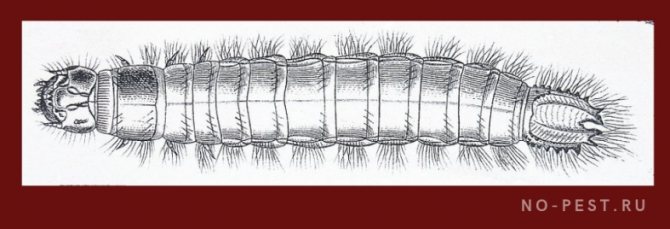

Wireworm larva structure
In fact, these are worms, differing in color and size. They have a chitinous shell in the form of a hard shell. They look like a piece of wire, hence they got their name. They have a long body from 1 cm to 4.5 cm, so they are easy to distinguish from other larvae
Wireworms predominantly inhabit arable land. There are other species, for example, predators (they hunt larvae, pupae and other soil-dwelling insects), necrophages (they feed on the remains of plant and animal organisms), or omnivores. In general, this insect is valuable for nature, since it is one of the elements of global soil formation. But (!) For agricultural land is the enemy.
They have a 13-segmented body, with well-developed three pairs of paws, color from yellow to dark brown. Antennae three-segmented, crescent-shaped or straight jaws. All three pairs of paws are equally developed and consist of four parts: a coxa, trochanter, thigh and ankle, ending in a claw.
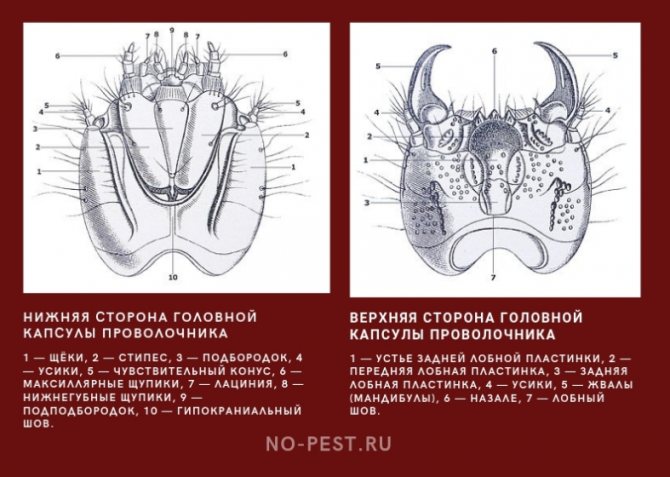

Wireworm head structure
The head is chitinized, in shape it is a quadrangle with rounded corners. The upper part is convex. The frontal plate is pronounced. I will not dwell on it in detail, a detailed description is in the reference books. The head structure is shown in the figure.
In order not to go into entomological details about each species of larvae of this beetle, it is worth mentioning general features.
The larva of the dark click beetle grows up to 2.5 - 3 cm, the chitinous membrane is dark yellow.
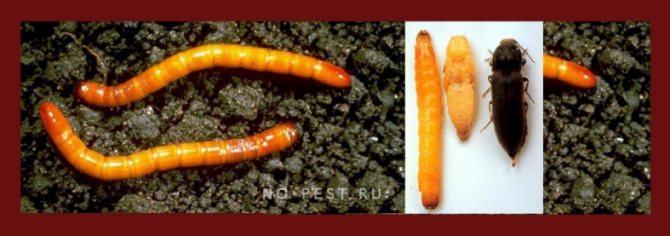

The dark nut beetle and its wireworm larva
The larva of the steppe nutcracker is larger, grows up to 4 cm, the color is red-brown.
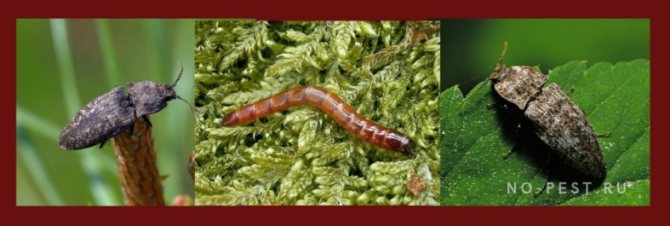

Steppe beetle - the clicker and its larva - the wireworm
The larva of the striped click beetle is thin, 2 - 3 mm, and 2 - 2.5 cm long, whitish in color.
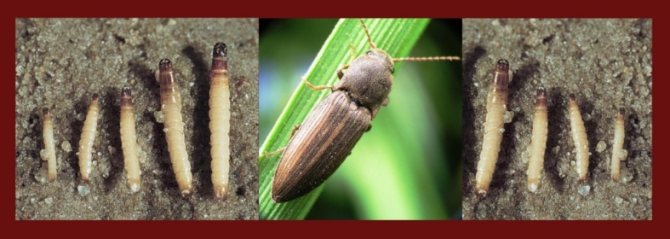

The striped nut beetle and its wireworm larva
Agrotechnical measures to combat the clicker
- During the digging of the earth (10-20 cm deep) in spring and autumn, beetles and larvae must be removed and destroyed.
- The soil between the rows should be constantly loosened.
- Liming the soil regularly. You can use eggshells, chalk, or lime.
- The soil should not lack mineral fertilizers. To do this, it is necessary to add ammonium sulfate or ammonia water to it.
- Constantly fight weeds. The clicker beetle is especially fond of wheatgrass.
- In the fall, preparing the beds for the new season, you need to remove all the tops from them.
- Planting density should be moderate and should not be thickened.
The bait in the fight against the nutcracker
A long-known and widely used method of pest control is the use of bait. To do this, before planting vegetables or cereals, cut raw potatoes, carrots or beets should be planted on a long stick. Bury the bait in the ground about 10 cm. After a few days, remove it.
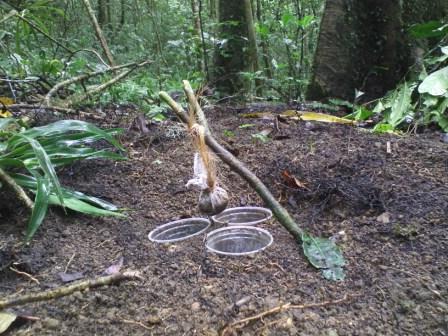

There will be many wireworms on it, they need to be collected and burned. This procedure can be repeated an unlimited number of times until the click beetle disappears. Other methods of struggle can be applied, both individually and in combination.
What the beetle eats
Most clickers are omnivorous. Steppe clickers live in Russia - dark beetles, garden pests. They are especially fond of potatoes and other root crops. The striped nutcracker prefers cereals, sunflowers.The small or sowing nutcracker also feeds on the roots of cereals and sunflowers, does not deny himself the pleasure of feasting on sugar beets and peanuts, eats up swollen seeds and seedlings, thereby reducing crop yields. Blood-spotted nutcracker prefers pine and birch roots.
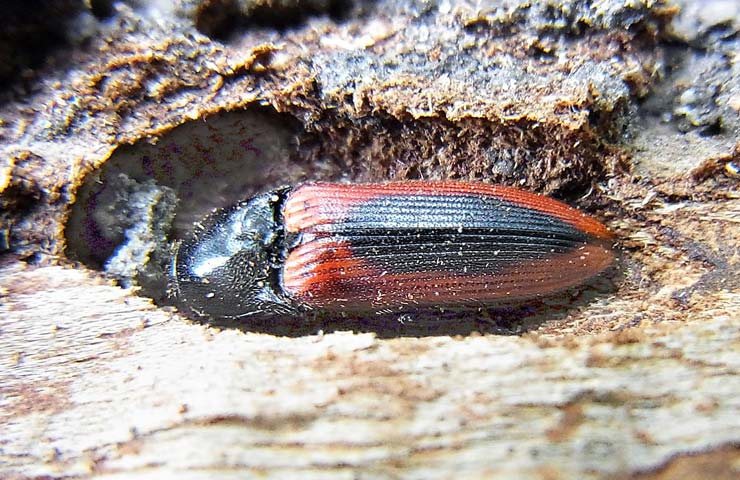

These beetles cause serious harm to many trees.
Glass jars against beetles and their larvae
During the winter, you should stock up on jars, preferably glass containers up to one liter. They will come in handy in the summer to fight the pest, as gardeners know how much damage the nutcracker does to plantings. The methods of dealing with it are very different. And this one is one of them. Throughout the site, in shaded places (there is more moisture, which wireworms love), glass jars are buried to the very neck. Pieces of chopped raw vegetables are placed at the bottom. Once every three days, the contents of the container, along with the wireworms (and they will definitely be there), are removed, the bait is again put in the jar. It is advisable to repeat this procedure several times per season.
Life cycle of clickers
Life cycle duration is 3-5 years... The main influences on duration are temperature and humidity. From the end of April, for several months, the female lays eggs under lumps of soil, in small depressions and near the base of young shoots. Each female can lay from 100 to 150 eggs per season, and some species up to 230. Each clutch consists of 3-18 eggs.
The larvae hatch from eggs in 12-33 days, depending on the species and environmental conditions. The size of the larvae that emerged from the egg does not exceed 2 mm, but they actively feed and reach 7 mm by the end of the year. Gradually, the larva reaches a length of 2 cm.
After 3-4 years, the grown larva pupates and hibernates.... The pupal stage lasts 20-30 days. In spring, an adult insect emerges from the pupa and the development cycle is closed.
Controlling wireworms with haulm and manure
Every vegetable grower thinks about how to get rid of a clicker beetle if suddenly a clicker beetle starts up on his garden plot. Read about it in this article and choose any method available to you. Remember: a favorite spot for wireworms to gather is tops, straw, or dung heaps.
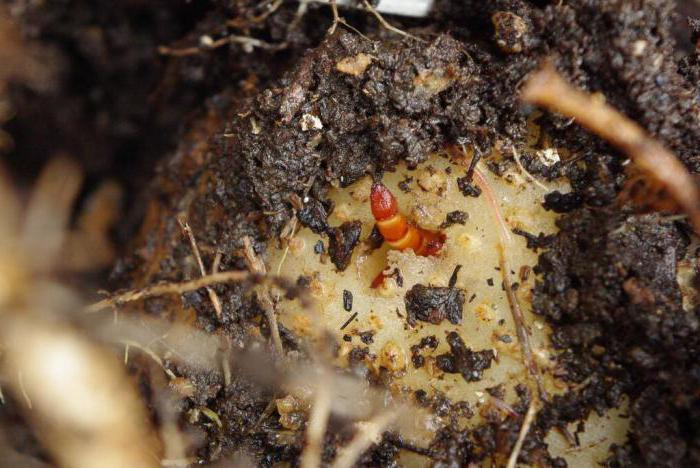

Therefore, in the fall, you need to take the trouble and scatter it all over the beds. Pests will have time to gather in warm places, and with the onset of frost, weeds, manure should be collected and burned.
Crop rotation is included in the fight
With a strong population of the site with a wireworm, before planting root crops, it is necessary to plant all the beds with legumes. In this case, the pest will not find other food for itself and will quickly leave the site. If it is not possible to use this method of fighting the wireworm, then when planting root crops, you should put several beans or Bulba fertilizer (for potatoes) in each nest. Calendula or marigold flowers are planted next to the potato bed. This will drive away insects and at the same time fertilize the soil with nitrogen.
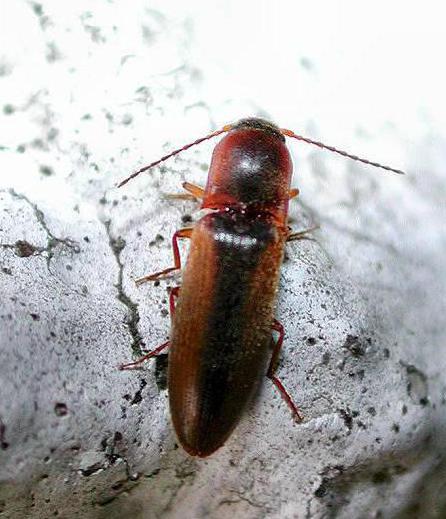

It is recommended to grow mustard on the site up to three times a season and embed it in the soil. The plant is sown in full or in rows two meters deep. This can be done in spring, before planting potatoes, and in autumn, after harvest, before frosts.
Chemical methods of dealing with wireworm
This is the fastest and most effective method of control, but also toxic. Therefore, if a beetle has only recently appeared in the soil, use the methods described earlier. But with the ubiquitous spread of the pest on the site, it is necessary to resort to chemicals.
- In the spring, during planting, each hole is spilled with a weak solution of potassium permanganate. Ten liters of solution is enough for 25 seats. The result is amazing. Instead of potassium permanganate, you can use an infusion of celandine, nettle or dandelion. Any of these herbs is crushed, filled with ten liters of water and infused for a day.Celandine needs 100 grams, nettle - 500, dandelion - 200.
- For three consecutive years, the soil should be fertilized with potassium chloride while digging the ground in the fall.
- The most effective chemicals in the fight against wireworm are Bazudin and Pochin. They are diluted with sand and introduced into the hole when planting. One teaspoon is enough.
- In the fall, before the onset of frost, it is recommended to fill the entire area with quicklime. In the spring, when the snow melts, the lime will dissolve, go into the ground, and the wireworm will leave its habitat.
Chemicals
Wireworm in potatoes: how to get rid of? How to withdraw? The best and fastest way to kill the larvae of the click beetle is to use special chemicals ... Here are examples of some of them that are very popular among consumers.
"Prestige"
How to get the wireworm out using this remedy? Anti-wireworm remedy "Prestige" perfectly relieves land from the drotyanka.
So, the drug is diluted in accordance with the instructions (10 ml of suspension is added to 10 liters of water) and poured into the well immediately directly before planting potatoes or other vegetables .
If you plan to treat an area with strawberries or flowers, use the same solution that is poured into a watering can for convenience.
The protective effect of this product lasts up to 50 days , after which it completely dissolves in the soil and does not cause any harm to the human body.
"Taboo"
Tabu wireworm remedy is suitable for treating potato tubers and seeds of other vegetables. Used by only during landing ... This is very economical means, because a small amount of it (10 ml of the suspension is diluted in 1.5 liters of water) is enough to spray 125 kg of root crops.
In this case, the tubers are laid out on a flat surface and treated with the prepared solution. Waiting for complete drying of the drug , vegetables are planted in the ground. Not dangerous for humans, because 2 months after treatment, it completely dissolves in the soil.

